#Hades:...
Explore tagged Tumblr posts
Text
Revisiting Image Maps
New Post has been published on https://thedigitalinsider.com/revisiting-image-maps/
Revisiting Image Maps
I mentioned last time that I’ve been working on a new website for Emmy-award-winning game composer Mike Worth. He hired me to create a highly graphical design that showcases his work.
Mike loves ’90s animation, particularly Disney’s Duck Tales and other animated series. He challenged me to find a way to incorporate their retro ’90s style into his design without making it a pastiche. But that wasn’t my only challenge. I also needed to achieve that ’90s feel by using up-to-the-minute code to maintain accessibility, performance, responsiveness, and semantics.
Designing for Mike was like a trip back to when mainstream website design seemed more spontaneous and less governed by conventions and best practices. Some people describe these designs as “whimsical”:
adjective
spontaneously fanciful or playful
given to whims; capricious
quaint, unusual, or fantastic
— Collins English Dictionary
But I’m not so sure that’s entirely accurate. “Playful?” Definitely. “Fanciful?” Possibly. But “fantastic?” That depends. “Whimsy” sounds superfluous, so I call it “expressive” instead.
Studying design from way back, I remembered how websites often included graphics that combined branding, content, and navigation. Pretty much every reference to web design in the ’90s — when I designed my first website — talks about Warner Brothers’ Space Jam from 1996.
Warner Brothers’ Space Jam (1996)
So, I’m not going to do that.
Brands like Nintendo used their home pages to direct people to their content while making branded visual statements. Cheestrings combined graphics with navigation, making me wonder why we don’t see designs like this today. Goosebumps typified this approach, combining cartoon illustrations with brightly colored shapes into a functional and visually rich banner, proving that being useful doesn’t mean being boring.
Left to right: Nintendo, Cheestrings, Goosebumps.
In the ’90s, when I developed graphics for websites like these, I either sliced them up and put their parts in tables or used mostly forgotten image maps.
A brief overview of properties and values
Let’s run through a quick refresher. Image maps date all the way back to HTML 3.2, where, first, server-side maps and then client-side maps defined clickable regions over an image using map and area elements. They were popular for graphics, maps, and navigation, but their use declined with the rise of CSS, SVG, and JavaScript.
<map> adds clickable areas to a bitmap or vector image.
<map name="projects"> ... </map>
That <map> is linked to an image using the usemap attribute:
<img usemap="#projects" ...>
Those elements can have separate href and alt attributes and can be enhanced with ARIA to improve accessibility:
<map name="projects"> <area href="" alt="" … /> ... </map>
The shape attribute specifies an area’s shape. It can be a primitive circle or rect or a polygon defined by a set of absolute x and y coordinates:
<area shape="circle" coords="..." ... /> <area shape="rect" coords="..." ... /> <area shape="poly" coords="..." ... />
Despite their age, image maps still offer plenty of benefits. They’re lightweight and need (almost) no JavaScript. More on that in just a minute. They’re accessible and semantic when used with alt, ARIA, and title attributes. Despite being from a different era, even modern mobile browsers support image maps.
Design by Andy Clarke, Stuff & Nonsense. Mike Worth’s website will launch in April 2025, but you can see examples from this article on CodePen.
My design for Mike Worth includes several graphic navigation elements, which made me wonder if image maps might still be an appropriate solution.
Image maps in action
Mike wants his website to showcase his past work and the projects he’d like to do. To make this aspect of his design discoverable and fun, I created a map for people to explore by pressing on areas of the map to open modals. This map contains numbered circles, and pressing one pops up its modal.
My first thought was to embed anchors into the external map SVG:
<img src="projects.svg" alt="Projects"> <svg ...> ... <a href="..."> <circle cx="35" cy="35" r="35" fill="#941B2F"/> <path fill="#FFF" d="..."/> </a> </svg>
This approach is problematic. Those anchors are only active when SVG is inline and don’t work with an <img> element. But image maps work perfectly, even though specifying their coordinates can be laborious. Fortunately, plenty of tools are available, which make defining coordinates less tedious. Upload an image, choose shape types, draw the shapes, and copy the markup:
<img src="projects.svg" usemap="#projects-map.svg"> <map name="projects-map.svg"> <area href="" alt="" coords="..." shape="circle"> <area href="" alt="" coords="..." shape="circle"> ... </map>
Image maps work well when images are fixed sizes, but flexible images present a problem because map coordinates are absolute, not relative to an image’s dimensions. Making image maps responsive needs a little JavaScript to recalculate those coordinates when the image changes size:
function resizeMap() ["load", "resize"].forEach(event => window.addEventListener(event, resizeMap) );
I still wasn’t happy with this implementation as I wanted someone to be able to press on much larger map areas, not just the numbered circles.
Every <path> has coordinates which define how it’s drawn, and they’re relative to the SVG viewBox:
<svg width="1024" height="1024"> <path fill="#BFBFBF" d="…"/> </svg>
On the other hand, a map’s <area> coordinates are absolute to the top-left of an image, so <path> values need to be converted. Fortunately, Raphael Monnerat has written PathToPoints, a tool which does precisely that. Upload an SVG, choose the point frequency, copy the coordinates for each path, and add them to a map area’s coords:
<map> <area href="" shape="poly" coords="..."> <area href="" shape="poly" coords="..."> <area href="" shape="poly" coords="..."> ... </map>
More issues with image maps
Image maps are hard-coded and time-consuming to create without tools. Even with tools for generating image maps, converting paths to points, and then recalculating them using JavaScript, they could be challenging to maintain at scale.
<area> elements aren’t visible, and except for a change in the cursor, they provide no visual feedback when someone hovers over or presses a link. Plus, there’s no easy way to add animations or interaction effects.
But the deal-breaker for me was that an image map’s pixel-based values are unresponsive by default. So, what might be an alternative solution for implementing my map using CSS, HTML, and SVG?
Anchors positioned absolutely over my map wouldn’t solve the pixel-based positioning problem or give me the irregular-shaped clickable areas I wanted. Anchors within an external SVG wouldn’t work either.
But the solution was staring me in the face. I realized I needed to:
Create a new SVG path for each clickable area.
Make those paths invisible.
Wrap each path inside an anchor.
Place the anchors below other elements at the end of my SVG source.
Replace that external file with inline SVG.
I created a set of six much larger paths which define the clickable areas, each with its own fill to match its numbered circle. I placed each anchor at the end of my SVG source:
<svg … viewBox="0 0 1024 1024"> <!-- Visible content --> <g>...</g> <!-- Clickable areas -->` <g id="links">` <a href="..."><path fill="#B48F4C" d="..."/></a>` <a href="..."><path fill="#6FA676" d="..."/></a>` <a href="..."><path fill="#30201D" d="..."/></a>` ... </g> </svg>
Then, I reduced those anchors’ opacity to 0 and added a short transition to their full-opacity hover state:
#links a opacity: 0; transition: all .25s ease-in-out; #links a:hover opacity: 1;
While using an image map’s <area> sadly provides no visual feedback, embedded anchors and their content can respond to someone’s action, hint at what’s to come, and add detail and depth to a design.
I might add gloss to those numbered circles to be consistent with the branding I’ve designed for Mike. Or, I could include images, titles, or other content to preview the pop-up modals:
<g id="links"> <a href="…"> <path fill="#B48F4C" d="..."/> <image href="..." ... /> </a> </g>
Try it for yourself:
Expressive design, modern techniques
Designing Mike Worth’s website gave me a chance to blend expressive design with modern development techniques, and revisiting image maps reminded me just how important a tool image maps were during the period Mike loves so much.
Ultimately, image maps weren’t the right tool for Mike’s website. But exploring them helped me understand what I really needed: a way to recapture the expressiveness and personality of ’90s website design using modern techniques that are accessible, lightweight, responsive, and semantic. That’s what design’s about: choosing the right tool for a job, even if that sometimes means looking back to move forward.
Biography: Andy Clarke
Often referred to as one of the pioneers of web design, Andy Clarke has been instrumental in pushing the boundaries of web design and is known for his creative and visually stunning designs. His work has inspired countless designers to explore the full potential of product and website design.
Andy’s written several industry-leading books, including Transcending CSS, Hardboiled Web Design, and Art Direction for the Web. He’s also worked with businesses of all sizes and industries to achieve their goals through design.
Visit Andy’s studio, Stuff & Nonsense, and check out his Contract Killer, the popular web design contract template trusted by thousands of web designers and developers.
#2025#Accessibility#ADD#amp#animation#animations#approach#aria#Art#Article#Articles#attributes#Books#Branding#brands#challenge#change#circles#code#content#CSS#css-tricks#CX#deal#Design#designers#developers#development#dimensions#direction
1 note
·
View note
Text
I headcanon Hades carries and picks up things with his left arm a lot and that is solely because of the amount of times he had to grab Zeus & Poseidon like this during the Titanomachy:

#Cant fight with each other if youre in air jail#the thought of doing this again has crossed his mind many times in the present😭#tho they are big and volatile enough to rock his shit if he tries now so he's not gonna.#But that does not stop him from doing it to other people#Nico: I'm going to Tartarus bye#Hades:*without looking* No you're not *grabs him by the hood of his jacket and just holds him in the air*#Hades:...#Nico:...#Nico: *dangling there* What the. fuck#But hey! At least it works for wowing his wife :)#Persephone: *the first time she came back after summer* Darling!#Hades: My love!#Persephone: *runs to him*#Hades: *grabs her by the waist and lifts her up with one arm*#Persephone: ....0//▼//0#pjo#percy jackson#percy jackson and the olympians#pjo headcanons#pjo headcanon#pjo Hades#Hades pjo#pjo Poseidon#pjo Zeus
20 notes
·
View notes
Text
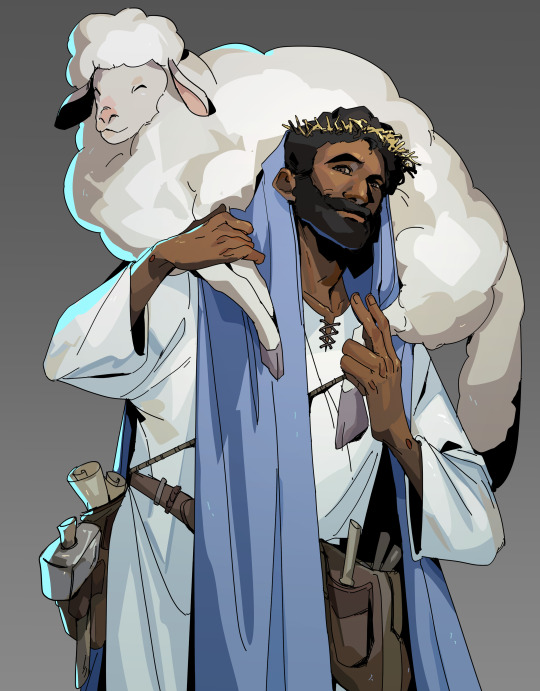
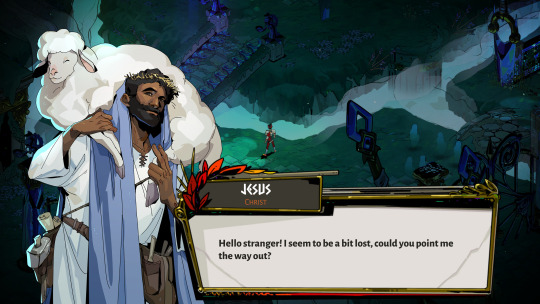
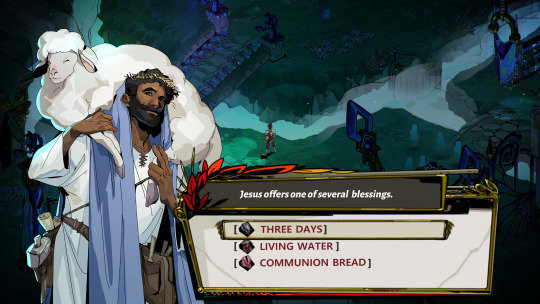
jesus in the hades art style
#he came for his lost sheep and took a wrong turn#art#digital art#wolfy religious tedtalks#jesus christ#bible#hades game#hades supergiant
94K notes
·
View notes
Text

#gomez and morticia#fly and leela#hades and persephone#rapunzel and eugene#het ships loved by gay people
29K notes
·
View notes
Text


How are you walking ?
#arcane#arcane season 2#arcane s2#jayce#jayce talis#jayce season 2#arcane survivor jayce#league of legends#lol#hades#hades game#digital art#digital drawing#fanart#my art
31K notes
·
View notes
Text
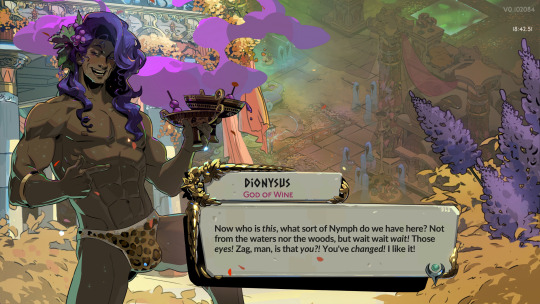
WHY IS NOBODY TALKING ABOUT HOW HE SAW MEL AND IMMEDIATELY ASSUMED ZAGREUS TRANSITIONED LMAOOOO
35K notes
·
View notes
Text




hades x arcane crossover ⭐️
#arcane#arcane season 2#mel medarda#viktor arcane#jayce talis#meljayvik#hades#hades game#crossover#au#digital art#fanart#art#sun!mel and moon!vik my beloved
24K notes
·
View notes
Text



P.s. Odysseus from timeline after "Thunder Bringer". Eurylochus and Polites from timeline right after Troy. Don't ask how it works, it's all for the sake of a hehe haha comic 👐 part 1 | part 2
(character designs by Neal Illustrator. Polites design by formerly human)
13K notes
·
View notes
Text
put three f/f ships you like in the tags. doesnt matter how obscure or embarrassing the media, go for it. and no, your m/m ship doesnt count as women
#ill start#sashannarcy#jessa#eris and melinoe hades#baru cormorant and tain hu#vrisrezi#undyne x alphys#noelle x susie#farcille#yoruichi x soi fon#togachako#jessie and delia#anastasia and alecto#though that ones just from stuff ive seen people make up but im taking it#anyway that plenty good luck
39K notes
·
View notes
Text
Hey everyone! This is my lovely friend Cyrus Nemati, who many of you may know as Theseus, Dionysus and Ares from the first Hades game.

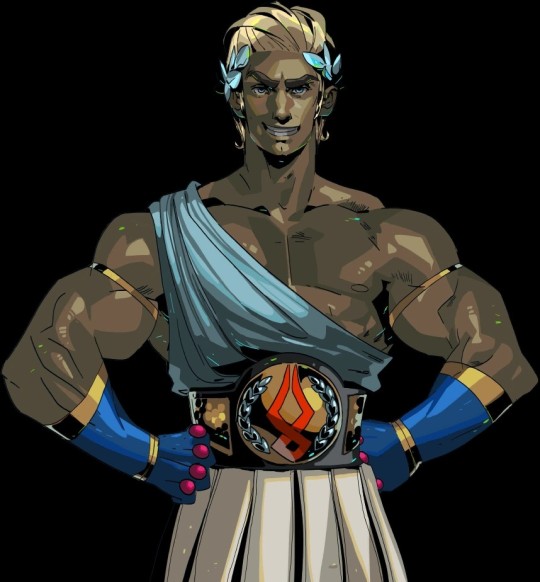
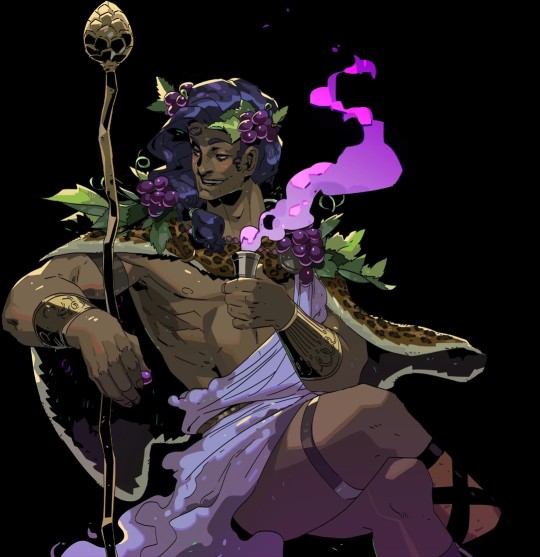
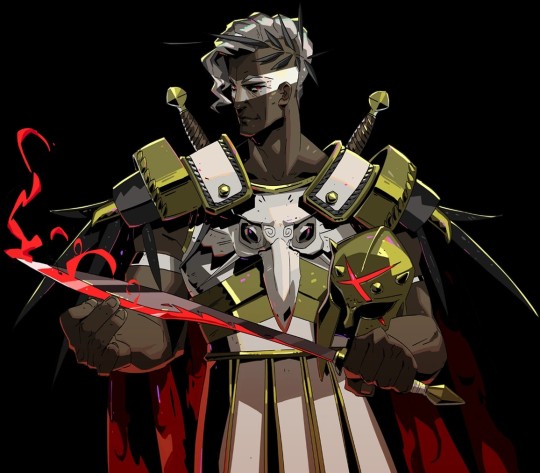
He has spent the last couple years developing his very first indie game, Vampire Therapist, which plays with the many vampire character archetypes from across media.
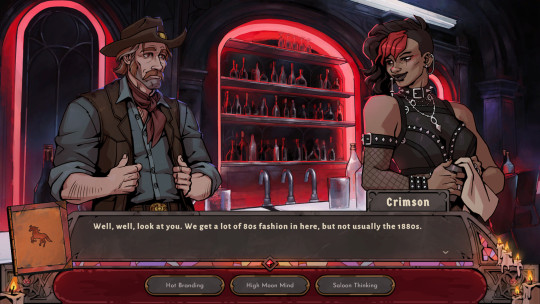
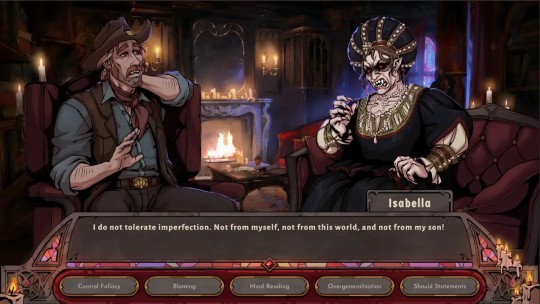

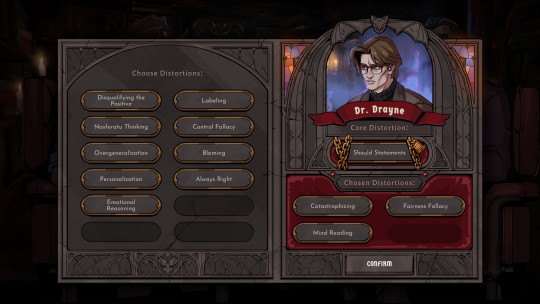
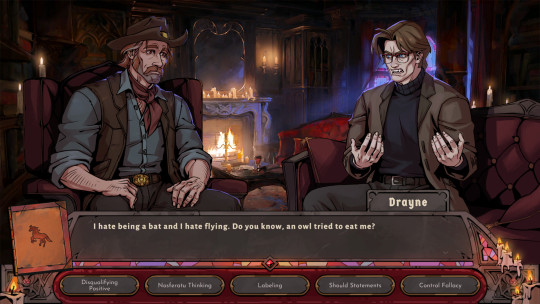
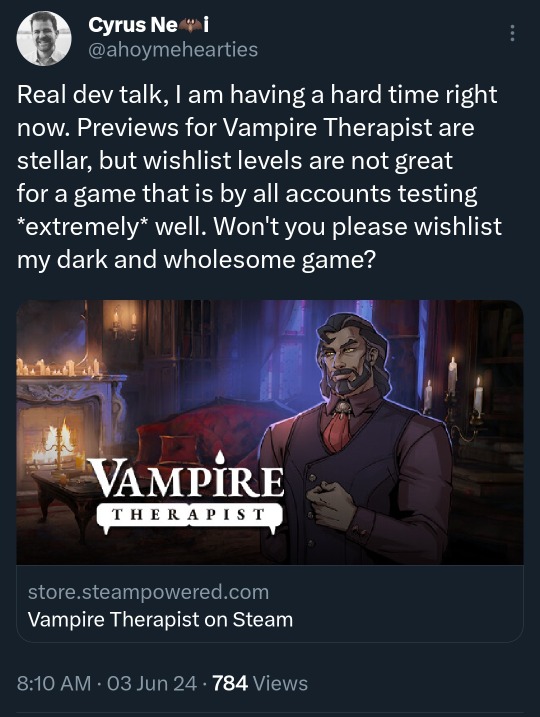
It's been reviewing VERY well but it's not getting very many wishlists, so if you're interested in vampires, fantastic art and clever, funny, and thoughtful writing about vampire mental health, go wishlist it on Steam!
And listen, Cyrus may be too humble to leverage his colorful career as your favourite Hades hotboys, so I'm gonna do it for him 😌 GO SUPPORT FANTASTIC INDIE DEVS LIKE THIS ONE!
#vampire therapist#interview with a vampire (about mental health)#cyrus nemati#hades game#dionysus hades#ares hades#theseus hades
42K notes
·
View notes
Text
I wish we had every single game on DS
Not 3DS, just DS. Guys please stop tagging this as 3DS


















#hades would absolutely *control* a lot better on 3DS but i bear a massive grudge against that console. og DS has a million times more charm#3DS is weirdly one of the worst ways to play DS games. they look bad on it both upscaled and 1:1 + the dpad is in an uncomfortable spot#the 3DSs mismatched screens‚ asymmetric controls & 3D feature all made it so much harder for new games to use the screens in cool DS ways#eg holding it sideways or making 2 screens form 1 long screen. 3DS sideways means no 3D‚ bigger top scrn pushes gameplay away from btm scrn#nintendo ds#ds#balatro#baba is you#hades#hades game#hades supergiant#tower bloxx#city bloxx#rogue#undertale#mario#mario kart#super mario kart#mario kart super circuit#zelda#zelda 1#tloz#the legend of zelda#legend of zelda#metroid#super metroid#nes#snes#windows xp#minesweeper
19K notes
·
View notes
Text
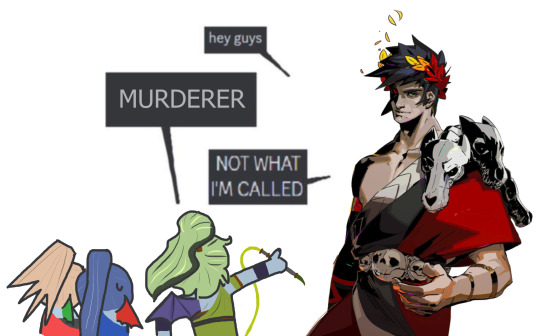
What its like when its her turn
#I got inspired by @rampantchailatte#and spent the last hour making this instead of working#hades game#hades supergiant#not what i'm called#InfintePosts#original post
8K notes
·
View notes
Text



#twitter#elden ring#hades#hades 2#terraria#sid meier's civilization#shovel knight#baldurs gate 3#bg3
32K notes
·
View notes
Text

Always with the dramatics with him
11K notes
·
View notes
Text
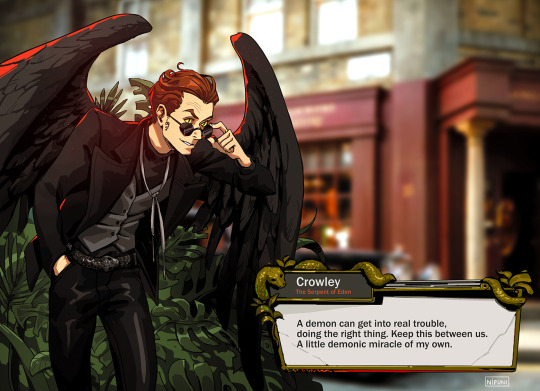
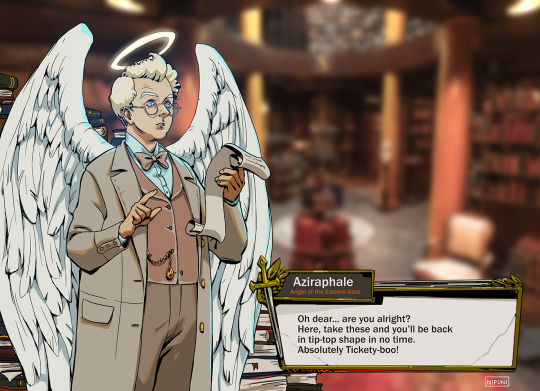
Aziraphale and Crowley in Hades style! 😊
A speedpaint video of these will be available at my Patreon on june 1st along with the 10th doctor one!
#good omens#crowley#aziraphale#david tennant#michael sheen#innefable husbands#hades game#hades II#my art#should I open commissions like these hmm
36K notes
·
View notes